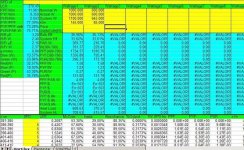knna
Member
Research/ just growing
Research/ just growing
I think we should differenciate too between the people who want to research and the people who just want to use LEDs instead of other lighting ways.
We cant obligue to the second group, that is the majority, to calculate how much uE they are using and all the data. They may aport valuable info anyway, at least of what works better for each one.
For research, we need accurate measurements.
I do both ways. I have a main cab that must produce the pot I use. Although I try to have well determined the amount of light in it, my priority with it is production. I try different thing in it, but I cant become crazy on what I do, I cant f**k the harvest.
On the other hand, I have two other small growing chamber where I can prove anything, and where I try to have all very well carcterized.
Research/ just growing
I think we should differenciate too between the people who want to research and the people who just want to use LEDs instead of other lighting ways.
We cant obligue to the second group, that is the majority, to calculate how much uE they are using and all the data. They may aport valuable info anyway, at least of what works better for each one.
For research, we need accurate measurements.
I do both ways. I have a main cab that must produce the pot I use. Although I try to have well determined the amount of light in it, my priority with it is production. I try different thing in it, but I cant become crazy on what I do, I cant f**k the harvest.
On the other hand, I have two other small growing chamber where I can prove anything, and where I try to have all very well carcterized.





 I want one sooooooo bad. I don't suppose you know of any cheap ones good enough for these purposes? I don't really feel like shelling out $1500 to know what kind of light I'm putting out....
I want one sooooooo bad. I don't suppose you know of any cheap ones good enough for these purposes? I don't really feel like shelling out $1500 to know what kind of light I'm putting out....



